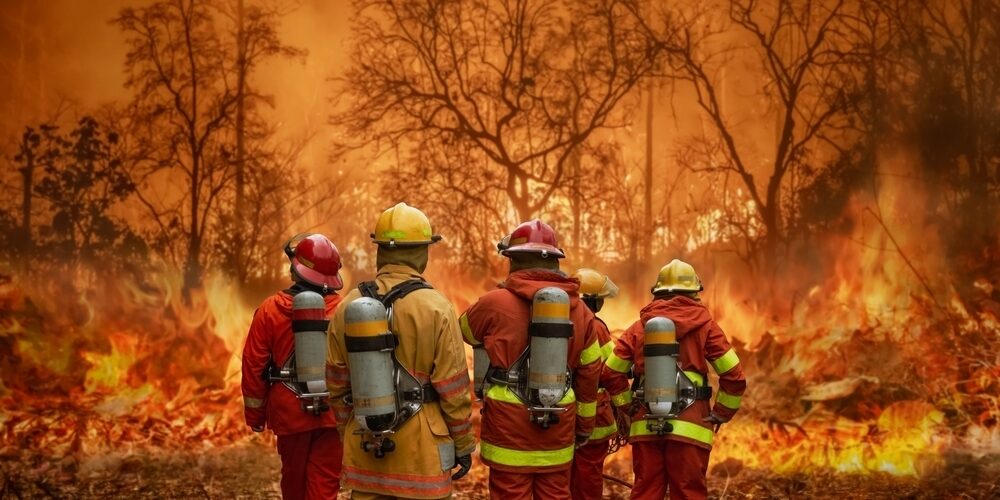California’s wildfires deepen the state’s insurance crisis
January 13, 2025

- Trinity Health to stay in Aetna’s network, split with Humana. What’s it mean for you?
- Top West Region Insurance Journal Stories of 2024
- Why are health insurance premiums in Massachusetts so expensive?
- With new homeowner policies, what will the future of CA home insurance look like?
- AI, ESG, and cyber will be the key insurance themes in 2025
The devastating wildfires that have hit Los Angeles may sound the death knell of California’s state insurance programme, insurance experts claim.
Bạn đang xem: California’s wildfires deepen the state’s insurance crisis
Established by the state, FAIR or Fair Access to Insurance Requirements is an insurer of last resort set up for homeowners in at-risk areas who can’t find affordable home insurance.
As private insurers have pulled out of California, the number of policies written by the FAIR plan has grown by more than 40% since late 2023. Between September 2020 and September 2024, the number of FAIR policies grew by 123%, to 452,000.
The value of the residential properties insured by FAIR has risen to more than $450 billion, triple what it was in 2020. With all the damage from the current fires, that plan is likely to go broke.
According to David Friedberg, founder of weather insurance company The Climate Corporation, FAIR has only $220 million of capital and $5 billion in reinsurance, while the programme has $6 billion of exposure in the Pacific palisades alone – the area badly hit by the LA wildfires – and could have more than $24 billion in total losses.
Xem thêm : Florida Stung by Insurance ‘Exodus’ as Insurers Dump Residents
This means the state insurance plan is effectively bankrupt and will need a bailout, he claimed in a recent podcast.
“It’s too early to say what will happen to the FAIR Plan,” Susan Crawford, a clinical professor emeritus at Harvard Law, wrote in a recent Substack post. “But it’s not too early to say that the financial stability of the FAIR Plan is doubtful. Its exposure is wildly out of proportion to its assets.”
Last summer, insurance giant State Farm cancelled 1600 policies in the Pacific palisades due to its location next to the brush-heavy Santa Monica Mountains and the high value of its homes, forcing homeowners to switch to FAIR or forgo insurance altogether.
State Farm’s decision reflects a trend of private insurers, including Allstate and Farmers Insurance, of dropping California policies or halting underwriting.
“I’m concerned that we’re one bad fire season away from complete insolvency,” said Jim Wood, then a California Assemblyman, back in March, during a committee meeting in which FAIR president Victoria Roach also expressed solvency concerns.
As fires continue to rage in Los Angeles, with Accuweather estimating losses of between $250 billion and $275 billion, that bad fire season, projected to be the costliest in US history, has now come.
Xem thêm : Accessing insurance after the Southern California fires
Scientists say that climate change, especially “hydroclimate whiplash”, is primarily responsible for the intensity of LA’s devastating fires.
Hydroclimate whiplash occurs when one extreme precipitation regime is replaced by another.
In the case of California, two extremely wet winters were followed almost immediately by a bone-dry Spring, Summer, and Autumn, and accompanied by above average temperatures.
California isn’t the only state to experience a climate-change driven insurance crisis. Property owners in Florida, Louisiana, and Texas are also finding insurance increasingly hard to afford or obtain, due to the increase of devastating hurricanes in recent years.
The challenges for Californian insurers highlight how climate change poses systemic risks for insurers impacting both their underwriting activities and investment portfolios. According to the latest Insure Our Future Scorecard, 30 major insurers earned more than $21.25bn from underwriting fossil fuel projects.
Meanwhile, EU insurers who hold fossil fuel assets in their investment portfolios could soon face higher capital requirements.
Nguồn: https://propertytax.pics
Danh mục: News
